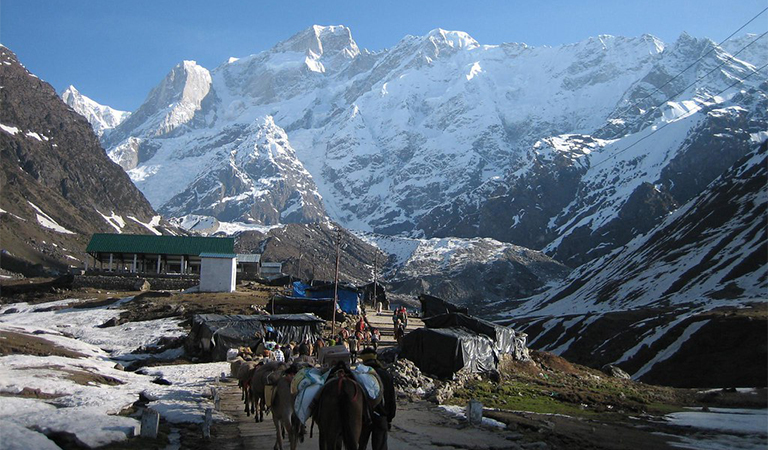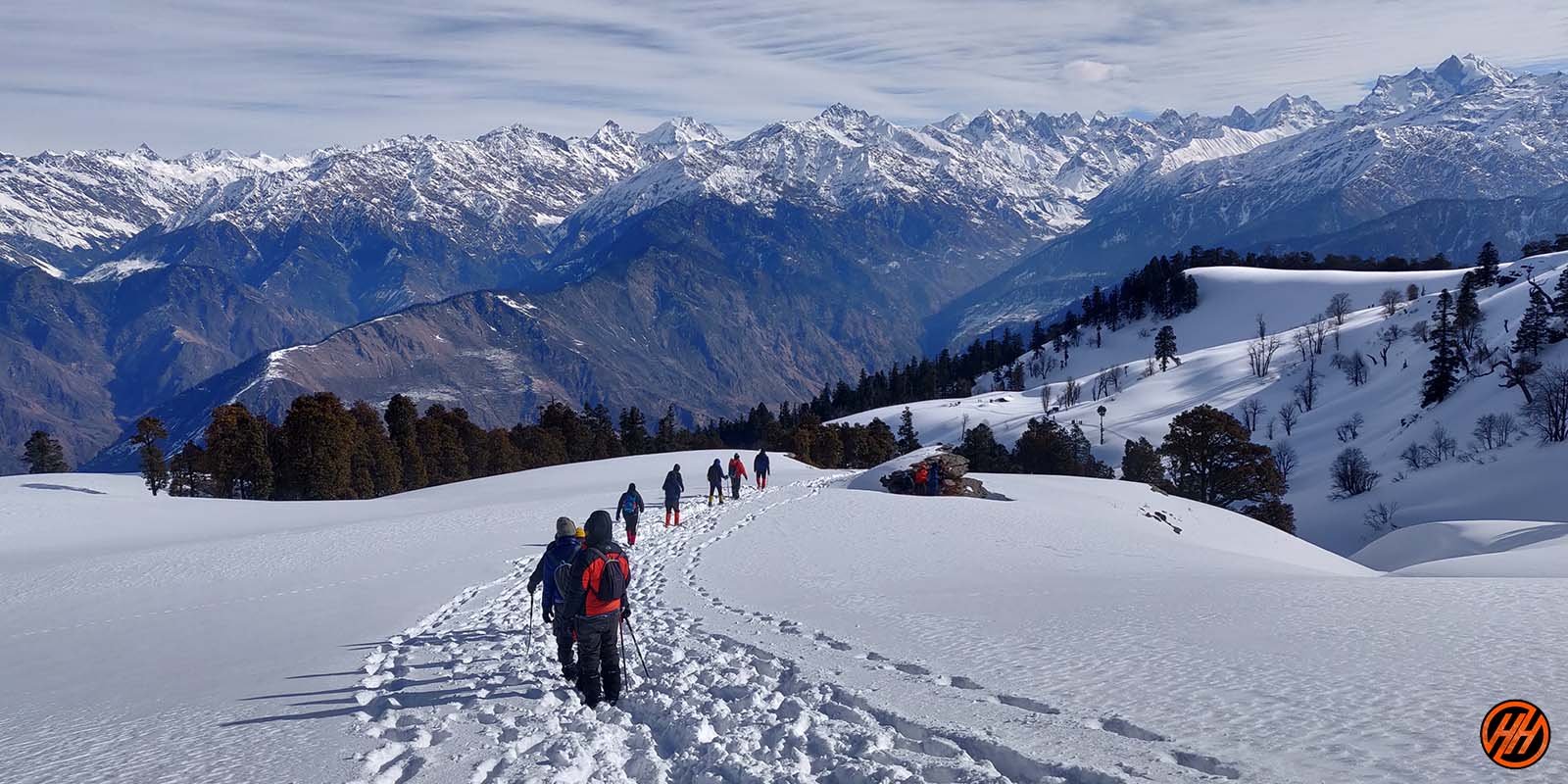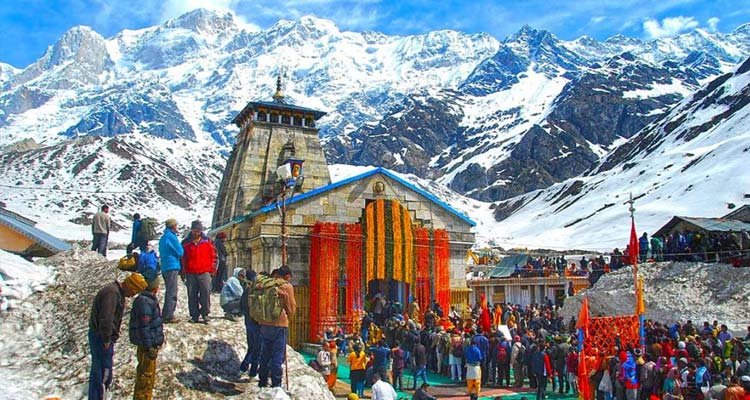
What is the difference between Kedarkantha and Kedarnath Trek
Kedarkantha Vs Kedarnath Trek – What is the Difference?
Kedarkantha vs Kedarnath Trek are two different trekking experiences in the Indian state of Uttarakhand, and they offer distinct experiences in terms of difficulty, location, and purpose. Here are the key differences between the two:
Location:
Kedarkantha Trek: Kedarkantha is a peak in the Govind Wildlife Sanctuary in the Uttarkashi district of Uttarakhand. The trek to Kedarkantha takes you through lush meadows, dense forests, and offers panoramic views of the surrounding Himalayan peaks.
Kedarnath Trek: Kedarnath is a holy town located in the Rudraprayag district of Uttarakhand. The trek to Kedarnath is a pilgrimage route that leads to the Kedarnath Temple, one of the Char Dham pilgrimage sites in Hinduism.
Purpose:
Kedarkantha Trek: The primary purpose of the Kedarkantha Trek is recreational and offers trekkers an opportunity to explore the natural beauty of the Himalayas. It is a popular winter trek, known for its snow-covered landscapes and stunning views.
Kedarnath Trek: The Kedarnath Trek is a religious pilgrimage that attracts thousands of devotees who visit the Kedarnath Temple, dedicated to Lord Shiva. The trek holds immense spiritual significance for Hindus.
Difficulty:
Kedarkantha Trek: The Kedarkantha Trek is considered a moderately challenging trek, suitable for both beginners and experienced trekkers. The difficulty level can vary depending on the season, with winter treks being more challenging due to snow.
Kedarnath Trek: The Kedarnath Trek, while not exceedingly difficult, can be physically demanding due to its length and the altitude gain involved. It is a more rigorous trek, especially for pilgrims who may not be accustomed to high-altitude treks.
Season:
Kedarkantha Trek: Kedarkantha Trek is popular during the winter season, from December to April, when the region is covered in snow. The summer season is also suitable for trekking but provides a different landscape.
Kedarnath Trek: The Kedarnath Trek is typically undertaken during the summer months, from May to November , when the weather is more favorable for the pilgrimage. The temple remains closed during the winter due to heavy snowfall.
In summary, Kedarkantha Trek is a recreational trek in the Govind Wildlife Sanctuary, while the Kedarnath Trek is a pilgrimage route to the sacred Kedarnath Temple. The choice between the two treks depends on your interests, physical fitness, and the purpose of your journey.
About Kedarkantha Trek in Uttarakhand Himalayas
The Kedarkantha Trek is a popular trekking destination in Uttarakhand, India. It offers a wonderful experience for nature lovers and adventure enthusiasts, especially during the winter months when the region is covered in snow.

Here’s a typical itinerary for the Kedarkantha Trek:
Day 1: Dehradun to Sankri
- Start your journey from Dehradun, which is well-connected by road and rail.
- Drive to Sankri, a picturesque village located in the Uttarkashi district.
- Overnight stay in Sankri.
Day 2: Sankri to Juda Ka Talab
- Start the trek from Sankri to Juda Ka Talab.
- The trail takes you through dense forests and beautiful meadows.
- Arrive at Juda Ka Talab, a serene small lake surrounded by pine trees.
- Camp at Juda Ka Talab for the night.
Day 3: Juda Ka Talab to Kedarkantha Base Camp
- Begin the trek to Kedarkantha Base Camp.
- The route continues through forests, and you’ll gain altitude.
- Reach the base camp, which offers spectacular views of the surrounding peaks.
- Set up camp at the base camp.
Day 4: Kedarkantha Base Camp to Kedarkantha Summit and back to Hargaon
- Early in the morning, start your ascent to the Kedarkantha Summit.
- The final stretch may involve walking on snow, especially in winter.
- Enjoy breathtaking views of the Himalayan ranges from the summit.
- Descend back to the base camp.
- Continue the descent to Hargaon, a beautiful campsite.
Day 5: Hargaon to Sankri
- Trek back to Sankri, retracing your steps through the forested trail.
- Celebrate the completion of your trek in Sankri.
- Rest and relax in Sankri or explore the village.
Day 6: Sankri to Dehradun
- Drive back to Dehradun from Sankri.
- End your trek and head back to your respective destinations.
Accommodation:
Accommodation Options 2 nights in our best & luxury hotels The Grand Shiva Home Stay & The Swargarohini Palace and stay during the trek in our tents on sharing basis as per the itinerary.
Please note that the Kedarkantha Trek itinerary can vary depending on the trekking company you choose, the season, and the specific route taken. It’s essential to be prepared for varying weather conditions, especially in winter, and to have the appropriate gear and clothing for a high-altitude trek. Additionally, consider hiring a local guide or trekking company to ensure a safe and enjoyable trekking experience.
About Kedarnath Trek in Uttarakhand Himalayas
The Kedarnath Trek is a popular pilgrimage route in the Indian state of Uttarakhand, leading to the Kedarnath Temple. Kedarnath is one of the Char Dham Yatra (four abodes) pilgrimage sites in Hinduism and holds great religious significance for devotees of Lord Shiva.

Here’s an overview of the Kedarnath Trek
Route:
- The trek to Kedarnath begins in the town of Gaurikund, which is the gateway to the temple. Gaurikund can be reached by road from places like Rishikesh and Haridwar.
- From Gaurikund, you’ll have to trek approximately 16 kilometers to reach Kedarnath Temple. The trail passes through picturesque landscapes, including forests, meadows, and the Mandakini River.
Key Highlights:
- Kedarnath Temple: The main attraction of the trek is the Kedarnath Temple, a revered Hindu shrine dedicated to Lord Shiva. It is situated at an altitude of about 3,583 meters (11,755 feet) in the Garhwal Himalayas. The temple is known for its ancient architecture and stunning mountain views.
- Scenic Beauty: The trek offers breathtaking views of the Himalayan peaks, including the Kedarnath Range. You’ll pass through lush forests, clearings, and charming villages on your way to the temple.
- Religious Significance: Many pilgrims undertake the Kedarnath Trek to seek the blessings of Lord Shiva and to complete their Char Dham Yatra, which also includes visits to Yamunotri, Gangotri, and Badrinath.
Trek Difficulty:
- The Kedarnath Trek is considered moderately challenging due to the steep and rocky terrain. Altitude can also be a factor, as Kedarnath Temple is situated at a significant height.
- Trekkers need to be prepared for variable weather conditions, including cold temperatures, especially in the early summer and late autumn months.
Best Time to Trek:
- The best time to undertake the Kedarnath Trek is during the summer months from May to October when the weather is milder and the temple is accessible.
- The temple remains closed during the winter season due to heavy snowfall, making it a challenging and risky time to trek.
Accommodation:
- Accommodation options along the trek route and in Kedarnath itself range from basic guesthouses and dharamshalas (pilgrim shelters) to more comfortable lodges and hotels.
Before embarking on the Kedarnath Trek, it’s advisable to check the current weather conditions, obtain any necessary permits, and be prepared with appropriate clothing and equipment. Hiring a local guide or joining a guided tour can also be helpful for a safe and enriching pilgrimage experience.
Kedarnath Trek (Yatra) Day by Day Itinerary
The Kedarnath Trek is a popular pilgrimage route leading to the sacred Kedarnath Temple in the Indian state of Uttarakhand. Here’s a typical itinerary for the Kedarnath Trek:
Day 1: Arrival in Haridwar or Rishikesh
- Your journey typically begins with your arrival in the city of Haridwar or Rishikesh, which are well-connected by road and rail.
Day 2: Haridwar/Rishikesh to Sonprayag or Gaurikund
- You’ll travel by road from Haridwar or Rishikesh to either Sonprayag or Gaurikund, depending on the road conditions and government regulations.
- Sonprayag is about 3-4 hours away from Gaurikund, and it’s common for vehicles to stop at Sonprayag. From here, you may need to take a shared jeep or walk to Gaurikund.
Day 3: Gaurikund to Kedarnath
- The trek to Kedarnath Temple begins from Gaurikund, which is the base camp.
- The distance from Gaurikund to Kedarnath is approximately 16 kilometers.
- The trek can take 6-8 hours to complete, depending on your pace and stops along the way.
- The route passes through Rambara, Linchauli, and Kedarnath Wildlife Sanctuary, offering scenic views of the Mandakini River and the surrounding mountains.
Day 4: Darshan at Kedarnath Temple
- Early in the morning, visit the Kedarnath Temple, one of the holiest shrines dedicated to Lord Shiva.
- After the darshan (worship), you can spend some time exploring the temple complex and taking in the serene atmosphere.
- It’s advisable to return to Gaurikund or Sonprayag the same day.
Day 5: Return to Haridwar or Rishikesh
- Begin your journey back to Haridwar or Rishikesh by road.
- Depending on the road conditions and your starting point, this journey can take several hours.
Please Note that this is a simplified itinerary, and the actual duration of your trip may vary depending on various factors, including road conditions, weather, and the pace at which you trek. Additionally, it’s important to check the latest travel and weather conditions before your trip and make necessary arrangements for accommodations and transportation. Pilgrims often choose to stay in Gaurikund or Sonprayag before and after their visit to Kedarnath Temple. Hiring a local guide or joining a guided tour can also enhance your pilgrimage experience and help you navigate the logistics of the journey.
